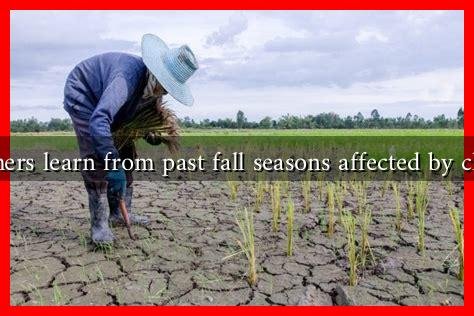-
Table of Contents
- What Can Farmers Learn from Past Fall Seasons Affected by Climate Change?
- The Impact of Climate Change on Fall Seasons
- Lessons from Recent Fall Seasons
- 1. Embrace Crop Diversification
- 2. Implement Water Management Strategies
- 3. Monitor and Adapt to Pest Dynamics
- Case Studies: Successful Adaptations
- Conclusion: Preparing for the Future
What Can Farmers Learn from Past Fall Seasons Affected by Climate Change?
As climate change continues to reshape agricultural landscapes, farmers are increasingly confronted with unpredictable weather patterns, shifting growing seasons, and new pest dynamics. The fall season, traditionally a time for harvest and preparation for winter, has been particularly affected. By examining past fall seasons impacted by climate change, farmers can glean valuable insights to adapt their practices and ensure sustainable productivity.
The Impact of Climate Change on Fall Seasons
Climate change has led to a variety of changes in fall weather patterns, including:
- Increased Temperatures: Fall temperatures have risen, leading to longer growing seasons but also increased stress on crops.
- Altered Precipitation Patterns: Changes in rainfall can result in droughts or excessive moisture, both of which can harm crops.
- Increased Pest and Disease Pressure: Warmer temperatures can lead to longer pest seasons and the emergence of new diseases.
These changes have been documented in various studies. For instance, a report from the National Oceanic and Atmospheric Administration (NOAA) indicates that the average temperature in the contiguous United States has increased by about 1.8°F since 1901, with significant implications for agriculture.
Lessons from Recent Fall Seasons
Farmers can learn several key lessons from recent fall seasons that have been affected by climate change:
1. Embrace Crop Diversification
One of the most effective strategies for mitigating the risks associated with climate change is crop diversification. By planting a variety of crops, farmers can reduce their vulnerability to pests, diseases, and extreme weather events. For example:
- In the Midwest, farmers who diversified their corn and soybean rotations with cover crops reported improved soil health and resilience against drought.
- In California, vineyards that incorporated drought-resistant grape varieties have seen better yields during dry fall seasons.
2. Implement Water Management Strategies
With changing precipitation patterns, effective water management has become crucial. Farmers can adopt practices such as:
- Rainwater Harvesting: Collecting and storing rainwater can provide a supplemental water source during dry spells.
- Drip Irrigation: This method minimizes water waste and ensures that crops receive adequate moisture.
According to the USDA, farms that implemented advanced irrigation techniques saw a 20% increase in water efficiency.
3. Monitor and Adapt to Pest Dynamics
As temperatures rise, pest populations can expand their range and increase in number. Farmers should:
- Regularly monitor pest populations and crop health.
- Utilize integrated pest management (IPM) strategies to minimize chemical use while effectively controlling pests.
A case study from Florida showed that citrus growers who adopted IPM practices reduced pesticide use by 30% while maintaining crop yields.
Case Studies: Successful Adaptations
Several farmers and agricultural organizations have successfully adapted to the challenges posed by climate change:
- The Rodale Institute: This organization has pioneered regenerative organic farming practices that enhance soil health and resilience against climate variability.
- Farmers in the Pacific Northwest: By adopting agroforestry practices, these farmers have improved biodiversity and reduced the impact of extreme weather on their crops.
These examples illustrate that proactive adaptation can lead to sustainable farming practices that not only withstand climate change but also thrive in its wake.
Conclusion: Preparing for the Future
As climate change continues to impact fall seasons, farmers must learn from past experiences to adapt their practices. By embracing crop diversification, implementing effective water management strategies, and monitoring pest dynamics, farmers can build resilience against the uncertainties of climate change. The lessons learned from recent fall seasons serve as a roadmap for sustainable agriculture, ensuring that farmers can continue to produce food in a changing climate.
For more information on sustainable farming practices, visit the Rodale Institute.

